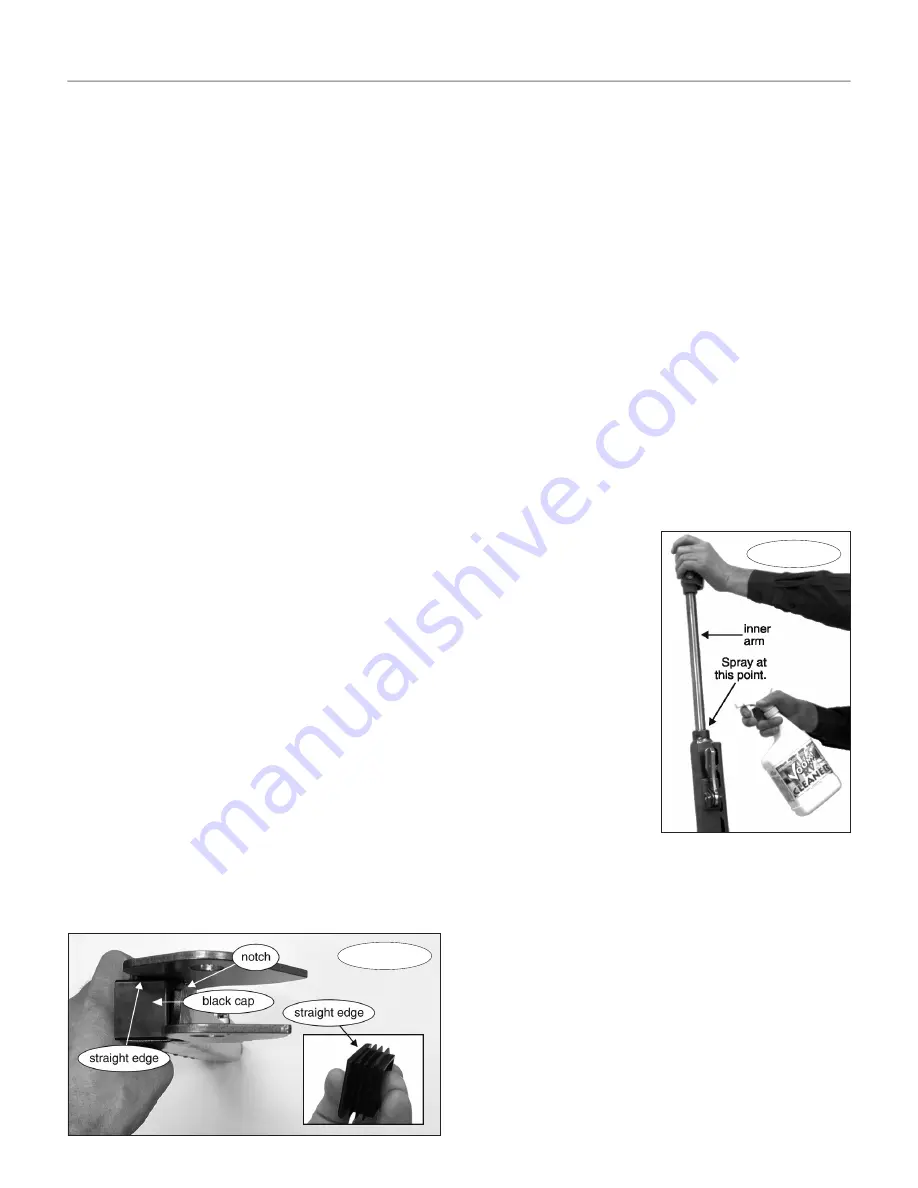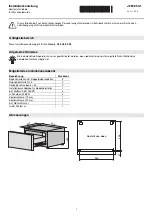
CARE AND CLEANING
As is the case with most precision equipment, frequent
cleaning and care results in better performance and lon-
gevity. Use the following guidelines to keep your tow bar
clean and well-lubricated.
Always clean the tow bar before lubricating. Use a
water-soluble cleaner such as ROADMASTER Tow Bar
Cleaner (part number 9932).
Clean all moving parts, paying special attention to the
tow bar arms and the locking mechanisms. No matter what
part is being cleaned, the method is the same — 1) spray
a liberal amount of cleaner over it; 2) flex the component
back and forth to work out any accumulated dirt; 3) wipe
it down; and 4) repeat until clean.
To clean one of the tow bar arms — with the tow bar on
the motorhome, remove the black cap at the end of the
tow bar arm (Figure 11). (It may be necessary to move
the tow bar arm to the left or right to gain clearance.)
Note: the inside of the cap is beveled on three sides,
and straight on one side. It must be reinserted into the
tow bar arm with the straight side parallel to the notch at
the end of the tow bar arm. See Figure 9.
Next, raise the arm and spray cleaner at the junction
of the inner/outer arm assembly (Figure 10). Move the
inner arm up and down to flush out dirt from the bottom
of the assembly. Wipe the dirt off and repeat until the arm
is clean. Repeat for the other arm.
CAUTION
Do not use grease, oil or WD40 to clean or lubricate
the tow bar. These will attract dirt and dust, which will
impede the operation of the sliding arms and/or other
components. Products like these may also corrode
non-metallic components.
Damage caused by using a petroleum-based prod-
uct to clean or lubricate the tow bar is not covered
under warranty.
After cleaning the tow bar, wipe any remaining cleaner
away.
To clean one of the locking mechanisms, first spray
cleaner into the mechanism, then raise the tow bar arm.
Move the release handle (Figure 6) up and down to flush
out dirt from the bottom of the assembly.
Close the arm. This will bring the internal locking compo-
nents close to the opening that was covered by the black cap.
Figure 9
Spray cleaner through the opening and over the locking
mechanism. Repeat until the locking mechanism is clean.
Allow the mechanism to air dry.
Repeat for the other locking mechanism.
Now that you have a clean, dry tow bar, use a dry
silicone lubricant, such as LubeMaster (part number 747),
to lubricate the tow bar — spray a liberal amount of the
silicone into all moving parts. Flex the tow bar compo-
nents, to work the lubricant in. LubeMaster sprays on wet,
then dries in seconds, so it won’t attract dirt or debris.
(Using a silicone lubricant on the base pins will make
them easier to pull out, and also creates an oxygen barrier
which helps prevent corrosion.)
Spray silicone lubricant inside both of the locking mech-
anisms and move the release handles up and down to
work the lubricant in.
CAUTION
Always clean the locking mechanisms, as described
above, before lubricating them. Silicone coats and cov-
ers in a thin layer. If it is not removed, it will reduce
the clearance for the
locking mechanisms,
preventing proper op-
eration.
Extended storage
—
before storing your Falcon
All Terrain for an extended
period of time, be sure to
clean and lubricate it as
above.
Store the tow bar in its
cover (optional, part num-
ber 055-3), to protect it
from the elements.
Figure 10
8





























